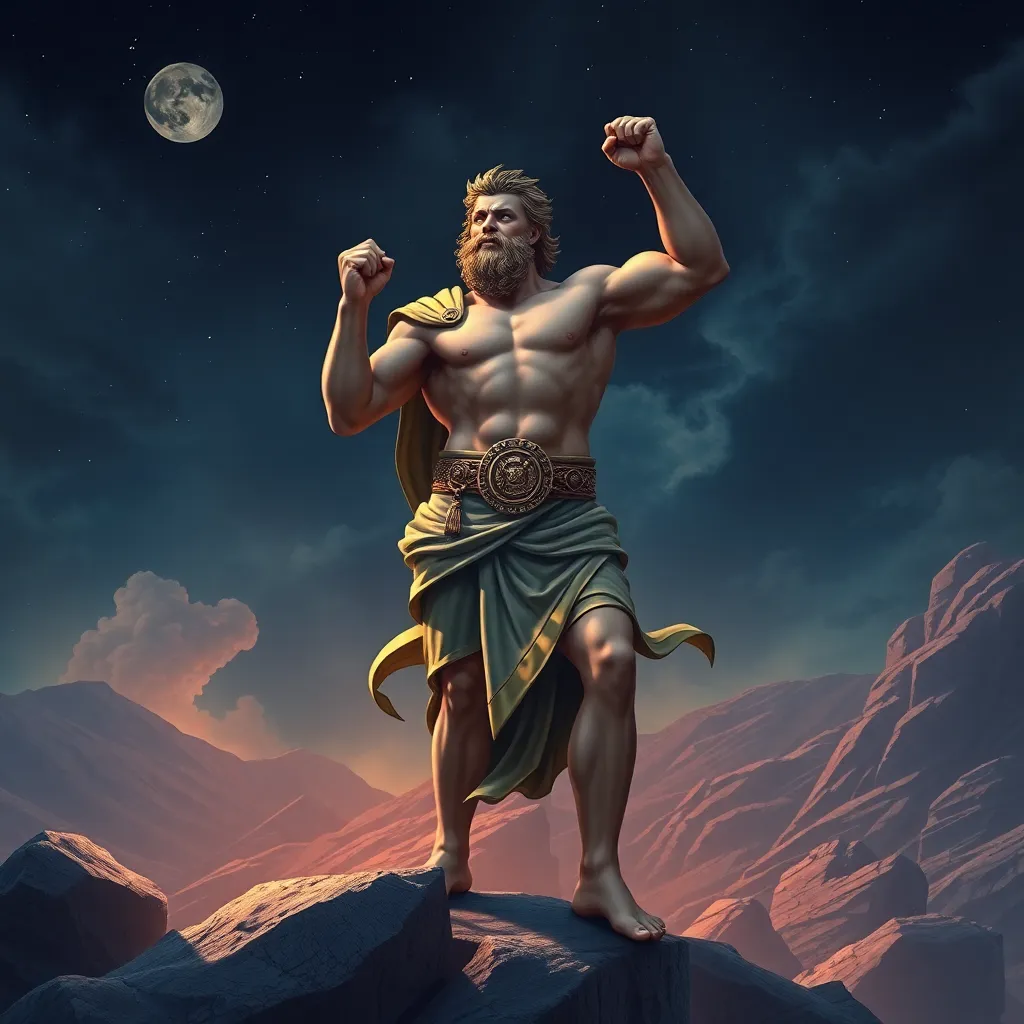Heracles and the Belt of Hippolyta: The Ninth Labor Explored
I. Introduction
Heracles, known as Hercules in Roman mythology, is one of the most celebrated heroes in Greek mythology. Renowned for his extraordinary strength and heroic feats, Heracles embodies the archetype of the hero who overcomes insurmountable challenges. His legendary status is primarily attributed to the Twelve Labors, a series of tasks that were deemed impossible, yet he accomplished them through sheer determination and strength.
This article focuses on the Ninth Labor of Heracles: the retrieval of the belt of Hippolyta, the Queen of the Amazons. This labor not only showcases Heracles’ physical prowess but also delves into themes of conflict, honor, and the complexities of heroism within the rich tapestry of Greek mythology.
II. The Background of Heracles
Heracles was born as the son of Zeus and Alcmene, a mortal woman, which granted him extraordinary abilities but also placed him in the crosshairs of Hera’s wrath. His origins are steeped in conflict, as Hera’s jealousy resulted in numerous trials throughout his life, including the infamous madness that led him to slay his own family.
Leading up to the Ninth Labor, Heracles had already completed eight daunting tasks, which include:
- Slaying the Nemean Lion
- Slaying the nine-headed Lernaean Hydra
- Capturing the Golden Hind of Artemis
- Capturing the Erymanthian Boar
- Cleaning the Augean Stables
- Slaying the Stymphalian Birds
- Capturing the Cretan Bull
- Stealing the Mares of Diomedes
These labors not only tested his strength but also his intelligence and cunning, establishing him as a multifaceted hero capable of overcoming diverse obstacles.
III. The Myth of Hippolyta
Hippolyta, the Queen of the Amazons, is a figure of great significance in Greek mythology. The Amazons are often portrayed as fierce female warriors, embodying independence and strength. They lived in a society where women held power and engaged in combat, challenging the traditional gender roles of ancient Greek culture.
The belt of Hippolyta is more than just an item of clothing; it symbolizes her authority and prowess as a leader among the Amazons. In some versions of the myth, the belt is gifted to her by Ares, the god of war, further emphasizing its importance as a symbol of power and femininity.
IV. The Quest for the Belt
The Ninth Labor was assigned to Heracles by King Eurystheus, who sought to humiliate him further. Eurystheus demanded that Heracles retrieve Hippolyta’s belt, believing that the task would be both perilous and degrading. Heracles embarked on a journey to the land of the Amazons, a place known for its fierce warriors and treacherous terrain.
Throughout his journey, Heracles faced numerous challenges, including:
- Navigating hostile territories
- Dealing with the skepticism of the Amazons
- Confronting his own doubts and fears
These challenges not only tested his physical abilities but also his resolve and leadership skills as he prepared to confront Hippolyta.
V. The Encounter with Hippolyta
When Heracles finally met Hippolyta, their interaction was marked by a complex blend of respect and tension. Initially, Hippolyta was impressed by Heracles’ valor and agreed to give him the belt willingly. This moment of agreement highlights the potential for cooperation between genders in a society often depicted as patriarchal.
However, the dynamics quickly shifted due to the influence of Hera, who spread rumors among the Amazons that Heracles intended to capture their queen. This deception led to mistrust and conflict, altering their initial agreement and setting the stage for a confrontation.
VI. The Battle and Resolution
The conflict erupted as the Amazons rallied to defend their queen against what they perceived as an invasion. Heracles, caught in the crossfire, was forced to defend himself and ultimately engage in battle against the Amazons.
During the battle, Heracles displayed not just brute strength but also his strategic prowess. The motivations behind the conflict were fueled by a blend of misunderstanding and the need to protect their queen. The outcome of the battle was bittersweet; Heracles defeated the Amazons, which solidified his status as a hero but also led to the loss of life among the warriors.
Ultimately, Heracles did acquire the belt of Hippolyta, fulfilling his labor, but the victory was inextricably linked to the violence and conflict that marred the encounter.
VII. Themes and Interpretations
The Ninth Labor of Heracles invites exploration of several themes, including:
- Strength and Honor: Heracles exemplifies physical strength, but the labor also questions the honor of achieving victory through conflict.
- Deception: The role of Hera’s deception highlights how misunderstandings can escalate conflicts, reflecting the complexities of human interaction.
- Gender Roles: The portrayal of Hippolyta and the Amazons challenges traditional gender norms, presenting strong female figures in contrast to Heracles’ masculinity.
Different sources and retellings of the myth offer varied interpretations, with some emphasizing Heracles’ heroism while others critique the violence and consequences of his actions.
VIII. Conclusion
The Ninth Labor of Heracles is a pivotal moment in his mythological journey, illustrating the complexities of heroism and the consequences of conflict. Through the retrieval of Hippolyta’s belt, the narrative weaves together themes of strength, honor, and the interplay between genders in a patriarchal society.
The legacy of Heracles and Hippolyta endures, reminding us of the relevance of these myths in contemporary culture. They challenge us to reflect on our definitions of heroism, the nature of power, and the dynamics of human relationships, fostering an appreciation for the rich narratives of Greek mythology.




